Neutrophils disrupt B-1a cell homeostasis by targeting Siglec-G to exacerbate sepsis
- PMID: 38789529
- PMCID: PMC11214631
- DOI: 10.1038/s41423-024-01165-7
Neutrophils disrupt B-1a cell homeostasis by targeting Siglec-G to exacerbate sepsis
Abstract
B-1a cells, an innate-like cell population, are crucial for pathogen defense and the regulation of inflammation through their release of natural IgM and IL-10. In sepsis, B-1a cell numbers are decreased in the peritoneal cavity as they robustly migrate to the spleen. Within the spleen, migrating B-1a cells differentiate into plasma cells, leading to alterations in their original phenotype and functionality. We discovered a key player, sialic acid-binding immunoglobulin-like lectin-G (Siglec-G), which is expressed predominantly on B-1a cells and negatively regulates B-1a cell migration to maintain homeostasis. Siglec-G interacts with CXCR4/CXCL12 to modulate B-1a cell migration. Neutrophils aid B-1a cell migration via neutrophil elastase (NE)-mediated Siglec-G cleavage. Human studies revealed increased NE expression in septic patients. We identified an NE cleavage sequence in silico, leading to the discovery of a decoy peptide that protects Siglec-G, preserves peritoneal B-1a cells, reduces inflammation, and enhances sepsis survival. The role of Siglec-G in inhibiting B-1a cell migration to maintain their inherent phenotype and function is compromised by NE in sepsis, offering valuable insights into B-1a cell homeostasis. Employing a small decoy peptide to prevent NE-mediated Siglec-G cleavage has emerged as a promising strategy to sustain peritoneal B-1a cell homeostasis, alleviate inflammation, and ultimately improve outcomes in sepsis patients.
Keywords: B-1a cells; CXCL12; CXCR4; Neutrophil elastase; Neutrophils; Sepsis; Siglec-G.
© 2024. The Author(s), under exclusive licence to CSI and USTC.
Conflict of interest statement
The authors declare no competing interests.
Figures
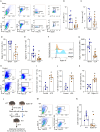
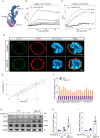
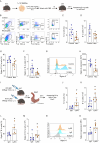
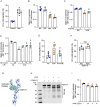
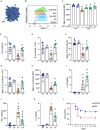
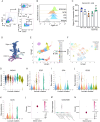

Similar articles
-
A novel molecule targeting neutrophil-mediated B-1a cell trogocytosis attenuates sepsis-induced acute lung injury.Front Immunol. 2025 Jun 11;16:1597887. doi: 10.3389/fimmu.2025.1597887. eCollection 2025. Front Immunol. 2025. PMID: 40568588 Free PMC article.
-
B-1a cells scavenge NETs to attenuate sepsis.J Leukoc Biol. 2024 Sep 2;116(3):632-643. doi: 10.1093/jleuko/qiae066. J Leukoc Biol. 2024. PMID: 38484156
-
γδ+ T-cell-derived IL-17A stimulates airway epithelial/stromal cells to secrete G-CSF, promoting lung-specific pathogenic Siglec-F+ neutrophil development in PPE-induced emphysema.Cell Mol Immunol. 2025 Jul;22(7):791-805. doi: 10.1038/s41423-025-01301-x. Epub 2025 Jun 3. Cell Mol Immunol. 2025. PMID: 40461699 Free PMC article.
-
The Role of Siglec-G on Immune Cells in Sepsis.Front Immunol. 2021 Feb 23;12:621627. doi: 10.3389/fimmu.2021.621627. eCollection 2021. Front Immunol. 2021. PMID: 33708213 Free PMC article. Review.
-
Treatments for chronic inflammatory demyelinating polyradiculoneuropathy (CIDP): an overview of systematic reviews.Cochrane Database Syst Rev. 2017 Jan 13;1(1):CD010369. doi: 10.1002/14651858.CD010369.pub2. Cochrane Database Syst Rev. 2017. PMID: 28084646 Free PMC article.
Cited by
-
CD300ld promotes neutrophil bacterial phagocytosis in sepsis.J Leukoc Biol. 2025 May 7;117(5):qiaf063. doi: 10.1093/jleuko/qiaf063. J Leukoc Biol. 2025. PMID: 40376837
-
Siglec-G Suppresses CD8+ T Cells Responses through Metabolic Rewiring and Can be Targeted to Enhance Tumor Immunotherapy.Adv Sci (Weinh). 2024 Dec;11(45):e2403438. doi: 10.1002/advs.202403438. Epub 2024 Oct 7. Adv Sci (Weinh). 2024. PMID: 39373395 Free PMC article.
-
A novel molecule targeting neutrophil-mediated B-1a cell trogocytosis attenuates sepsis-induced acute lung injury.Front Immunol. 2025 Jun 11;16:1597887. doi: 10.3389/fimmu.2025.1597887. eCollection 2025. Front Immunol. 2025. PMID: 40568588 Free PMC article.
-
The Infectivity and Pathogenicity Characteristics of a Recombinant Porcine Epidemic Diarrhea Virus, CHFJFQ.Viruses. 2025 Mar 12;17(3):401. doi: 10.3390/v17030401. Viruses. 2025. PMID: 40143328 Free PMC article.
-
CircIRAK3 Promotes Neutrophil Extracellular Trap Formation by Improving the Stability of ELANE mRNA in Sepsis.Inflammation. 2025 Aug;48(4):2503-2515. doi: 10.1007/s10753-024-02206-z. Epub 2024 Dec 21. Inflammation. 2025. PMID: 39707013 Free PMC article.
References
MeSH terms
Substances
Grants and funding
LinkOut - more resources
Full Text Sources
Medical

